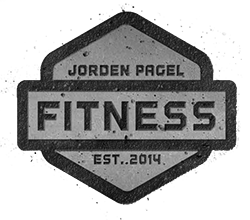Creating An Effective Fat Loss Program: Part 3
Welcome to the next installment of my “Creating an Effective Fat Loss Program” series. In this article, we are going to be discussing the third pillar of an effective fat loss program:
- Calorie & Macro Accountability
- Flexible Dieting
- Strength & Resistance Training
- Developing a Good Mindset
In the first two parts of this series we talked about how to set a caloric deficit for fat loss, as well as discuss how to structure your diet to set you up for success in reaching your goals.
In this article, I am going to discuss the benefits strength & resistance training provides to your body, how to use it to reach your goals, and why it may be the more efficient and useful form of exercise when trying to lose body fat.
III. Strength & Resistance Training
Lets face it, being strong makes everything easier. Whether you play sports, have a physically demanding job or are a stay-at-home parent, strength dictates how effectively we can perform our everyday tasks.
And it certainly makes shoveling all this Midwest snow a lot easier.
But the benefits of strength training go far beyond that of just making you stronger.
Strength training will…
Help Burn Body Fat: We already learned in Part 1 that you need to be in a caloric deficit in order to lose weight. But how do you get your body to burn fat and not muscle?
You guessed it, strength training!
Strength training helps preserve lean muscle mass while in a caloric deficit. And when lean muscle is preserved, your body needs to turn to other forms of stored energy to sustain itself (i.e. fat). Maintaining our muscle gives us that lean, sexy appearance when body fat is reduced.
Muscle also has a large effect on your metabolic rate. This is because it takes your body more energy to maintain muscle than it does fat. A pound of fat in the body only burns an estimated two to three calories. Muscle on the other hand burns seven to ten! By maintaining or even increasing muscle mass, you therefore keep your metabolic rate higher, allowing you to diet on a higher amount of calories.
Lastly, strength training provides a higher level of excess post-exercise oxygen consumption (EPOC) than other forms of exercise. What that means is your body has to work longer after you finish your workout to recover and return to its normal state. This gives your metabolism a boost, providing an “after-burn” effect for up to 24 hours post-workout.
Increase Hormonal Response: Strength training stimulates the release of anabolic hormones that help the body build muscle and burn fat. Two of the main hormones affected by strength training are testosterone and growth hormone (GH).
While testosterone is mainly thought of as a male hormone, women have small amounts of it as well. And it plays important roles in both sexes. Testosterone not only helps maintain and build muscle, but it also can help decrease body fat, prevent osteoporosis, and probably most importantly, increase sex drive.
Growth hormone also plays a very important role within your body. In addition to helping build muscle, growth hormone increases fat oxidation and the utilization of fatty acids, which in short means it helps burn fat. GH also keeps you healthy by aiding in immune cell function, cell growth and regeneration and helps in slowing the progression of age related diseases.
Keep Your Body Healthy and Functioning Properly: Strength training goes a long towards helping you stay healthy. Among other things, it will increase your bone density, reduce your resting blood pressure, preserve lean muscle tissue, improve cholesterol, increase joint stability and improve coordination.
Strength training can also help improve the quality of life for people with various diseases and conditions, including: arthritis, osteoporosis, diabetes, and back pain, according to the Center for Disease Control.
It can keep you mentally healthy as well. Psychological benefits include feelings of confidence, sexiness, empowerment, and happiness. What happens after a few weeks of strength training is even though you may not look that much different, you feel like you do. This makes you feel good, so you keep going, until you aren’t solely training just for the physical benefits, but also because it makes you feel good about yourself.
Now that we know about some of the benefits of strength training, and why it is great for a fat loss program, lets talk about how to get the most out of your strength training program.
A good strength training program is based on the following two principles: compound movements and progression. Lets briefly talk about each…
Compound Movements
These movements are the foundation of any good resistance training program. Regardless of your goal, compound movements give you the biggest bang for your buck.
Compound movements are multi-joint exercises that work multiple muscle groups at the same time. Examples of such movements are the squat, deadlift, bench press, overhead press, pull-ups and rows. Isolation exercises on the other hand, are movements that only work one muscle group at a time.
Things like bicep curls, shoulder raises, etc, are great if you are trying to build muscle, and even have their place in the context of a fat loss program, but to get the most out of your time, you should be focusing on large, compound movements.
Think about it this way: The more muscles you work, the greater the benefits.
Progression
To get the most out of any strength training program, you must have progression. Progression can come in many forms, but in the context of strength training, it usually means adding weight to the bar. You wont get any stronger if you keep performing the same number of reps with the same weight at each workout.
Here’s an example: You go to the gym and you are suppose to perform 3 sets of squats for 5 reps each (typically referred to as 3×5). You put 100 pounds on the bar and you get all 5 reps in each set. Great! Now next time you would try for 3×5 at 105 pounds. You added weight to the bar. That’s progression. And as long as you keep hitting all your reps across all your sets you can keep progressing.
Progression is not only physically important, but mentally as well. Progress in the gym is a lot more noticeable than progress on the scale or in the mirror week to week. When you lift more weight than you did last time, that’s progress! Seeing this progress builds confidence and will make it easier to stick with a routine, which is paramount for long-term success.
Which Program Is Right For Me?
Honestly, there is no one single answer to this. A lot of it depends on your training experience. But for someone with minimal strength training experience, someone who has never followed an actual strength training program before, or even an intermediate lifter with strength training experience, a simple 3-day/week, linear progression program will work great.
When I first started strength training, the program I followed was Stronglifts. The program looks like this:
Workout A
Squat 5×5
Bench Press 5×5
Barbell Row 5×5
Workout B
Squat 5×5
Overhead Press 5×5
Deadlift 1×5
For each exercise you perform 5 sets of 5 reps of the same weight (with the exception of deadlifts, where you only perform one set). If you get all 5 reps in all 5 sets, you add 5lbs to that exercise the next workout. As long as you are completing all your reps, you keep adding weight.
You perform this workout 3x/week, alternating between Workouts A & B.
So week one would be: Mon – A, Weds – B, Fri – A. Week two would then be the opposite: Mon – B, Weds – A, Fri – B. Week three would be the same as week one, week four the same as week two, etc.
I loved this program when I did it, and made solid progress for well over a year!
Another great program is Starting Strength. I have never done this one personally, but it is very similar to Stronglifts.
Regardless of the program you choose, the most important thing is that you stick with it. Going from one program to the next every few weeks will do nothing to help your progress. Consistency and sticking with a program will do more for your progress than jumping on the next exercise fad will.
Myths and Misconceptions
There are a few myths and misconceptions surrounding strength training. Lets address some of them…
1. “I am too young/old for strength training.”
This might be the most common misconception about strength training. The reality is however, that strength training can provide young and old alike with many positive health benefits.
This study, done by the American Academy of Pediatrics shows positive effects of strength training in adolescents and preadolescents, including strength enhancement and increased athletic performance.
On the other end of the spectrum, if you think you are too old to be strength training, you are exactly the type of person who should be doing it. Besides helping prevent the loss of muscle tissue that occurs as we age, strength training has been show to delay Alzheimer’s and improve brain function. All the more reason to hit the weights!
2. “I don’t want to get hurt.”
Great, start strength training! Like we discussed above, the physical benefits of strength training go far beyond just getting stronger. It increases bone density, joint strength, improves posture, etc. If you have aches and pains, strengthening that area of your body may be just what you need.
Look, as with almost every other sport or activity, strength training doesn’t come without the risk of injury. But so does walking up a flight of stairs for that matter. Injuries occur in weightlifting mainly as a result of poor form and people being stupid, like trying to lift more weight than they can just to try and impress their friends.
If you’re worried about this, hire a trainer at your local gym for a few sessions to guide you through proper form. Having someone there who knows proper form, even if its just at the beginning, will go a long ways towards making sure you are performing the lifts safe and effectively.
3. “I don’t want to get bulky.”
This is another very common myth associated with strength training, and you typically will hear it from women. And I understand where they are coming from.
This myth is mostly fueled by people like Tracy Anderson who tell women they shouldn’t lift anything over 3 pounds unless they want to turn into a testosterone-fueled she-hulk.
The truth is that building muscle takes a lot of work and a lot of time…a lot more than it does to lose fat.
First of all, to build any sort of appreciable muscle mass, you have to be eating in a caloric surplus to fuel muscle growth. Sure a beginner may put on a little bit of muscle when they start a strength training program, but this will only amount to a few pounds and will help build curves, as well as that lean, sexy look than many want.
Second, women simply to not have the testosterone necessary to build large amounts of muscle. Women who do have a lot of muscle are likely consuming a lot of drugs as well. When women strength-train, they end up looking like athletes, not bodybuilders.
What About Cardio?
Ah yes, cardio. Full disclosure, I don’t perform a lot of cardio, mainly because I don’t like it. I may walk a few times a week for recovery purposes, or throw a day of sprints or high-intensity intervals every once in a while, but I find it incredibly boring, so I simply don’t do it very often.
Now you may be wondering, “Don’t I HAVE to do cardio to lose weight?!”
No. No you don’t. Not if you don’t like it at least.
I never did.
Let me back up here and explain…
It has long been believed that cardio is superior to resistance training when it comes to fat loss. And that’s not without some merit. Cardio burns more calories during the actual workout than strength training does.
So you may be thinking, “Well if cardio burns more calories than strength training, shouldn’t I be doing cardio? What was the point of this article?!”
Hold on speed racer, we’re not there yet.
Yes, cardio burns more calories than strength training during the workout. But calories burned during exercise are only a small part of the picture. What you should be focusing on is how many calories you are burning during the course of the entire day.
Once you are done performing cardio, you recover fairly quickly, and return to your normal metabolic rate soon after the workout. But with strength training, your metabolic rate stays elevated for hours because your body has to work harder to recover.
Also, we already discussed that muscle increases your metabolic rate and that during times in a caloric deficit (like when trying to lose weight) you want to preserve muscle to keep your metabolic rate as high as possible. The problem is cardio does not stress the muscles enough to the point where your body will work to preserve and grow them. Therefore your body will draw energy from your muscles as well as fat.
The other issue is that cardio can be pretty boring. Time spent on a treadmill or bike is time that could be put towards something else. So instead of burning a few hundred calories through cardio, simply just cut a few hundred calories out of your diet instead. At the end of the day, the result is the same and you end up with more time on your hands. I mean, we already complain we don’t have enough time in the day as it is, right?
Traditional steady-state cardio, like running and cycling, can also lead to a number of overuse injuries. With running and jogging, each step you take brings a force of 2-3 times your bodyweight. It’s this repetitive force that if done often enough can lead to stress fractures, cartilage breakdown and low back pain.
Similarly, cycling can have a negative impact on your body. Cycling is done in a sitting, hunched over position. If you’re someone who is already sitting all day, this is the last position you want to put your body in when you are trying to be physically active.
Lastly, running, cycling or using an elliptical makes you good at performing those activities, but does very little for making you better at performing day-to-day activities. Yes these activities will help improve you cardiovascular health, but will not do anything for improving strength.
Now, am I saying you shouldn’t perform cardio? Of course not. If you enjoy it, you can definitely work it into your routine. But when it comes to losing fat, know that a majority of your time is better spent resistance training and focusing on your diet, with cardio mixed in sparingly.
Wrapping Up
As we’ve learned here, strength training has a whole host of benefits, not only for fat loss, but for overall health as well. That is why I utilize it in all of my clients programs in some form or another. The physical, hormonal, and psychological benefits of strength training are second to none.
When it comes to losing fat, your training program does not need to be complicated. You don’t need to spend two hours in the gym everyday. You don’t need to “confuse” your muscles.
What you do need is a program that puts you in the gym a few times a week, for an hour max, and has you progressing from one workout to the next. A good strength training program will do this. It’s time efficient and gives you the most bang for your buck.
And if you’re new to strength training, or feel like you need a little extra help, hire a trainer. Or try online coaching. The extra guidance will go a long way towards getting yourself comfortable with strength training, and getting the results you want.
In the fourth and final article in this series, we’ll discuss some of the psychological aspects of a good fat loss program and how having the right mindset is critical for your success.
Questions? Leave them in the comments below. As always, if you liked this article please share it with your friends!
[sexy_author_bio]







